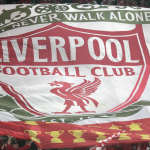
BY the time Oliver Glasner took charge of his first game at Crystal Palace against Burnley, the Eagles were just five points above the relegation zone, having won just two of their previous 14 league games.
Nine games on, the London club are now 14 points clear of the drop zone, with their 2-0 win over Newcastle last time out seeing them win three on the bounce in the top-flight for the first time since April 2023.
The Austrian’s impact is beginning to be felt at Selhurst Park, with Palace starting to reap the rewards, as they look to finish the season on a high.

Only four sides have more points than Crystal Palace (14) since Glasner’s first game in charge; a dominant 3-0 win over Burnley. Considering the Eagles have dropped 10 points from winning positions under the Austrian, a joint-league high along with Manchester United, it could be even better for Palace, with 1-1 draws against Luton and Nottingham Forest having taken the lead as missed opportunities.
Comparing the numbers for Crystal Palace under Glasner and Hodgson this season – excluding the 1-1 draw against Everton in February under Paddy McCarthy – the biggest difference under the two managers is both their expected goals per game and xG per shot in the Premier League, with the Eagles’ quality of shot improving under the Austrian.

As well, they’ve become much more active in the final third, winning possession in that area of the pitch more often under Glasner, and having more touches in the opposition’s box.
It’s clear thar Glasner is wanting Palace to be much more proactive rather than passive, setting up in a 3-4-2-1 shape, just as he did during his tenure at Eintracht Frankfurt, and engaging the opposition much higher up the pitch than compared to Hodgson.

They’re in the top five in the Premier League for defensive actions, start distance and pressed sequences under Glasner, which is in stark contrast to what they were doing under Hodgson; not that that’s to say it’s the only way to play, but is clear what he’s trying to achieve at the very least.
And the early signs are promising, with Eberechi Eze fifth overall in the Premier League for expected assists (2.99) under the Austrian, and Adam Wharton continuing to catch the eye since his January move from Blackburn Rovers.
But perhaps the biggest beneficiary of Glasner’s arrival is Jean-Philippe Mateta. Hardly a prolific striker under Patrick Vieira (6 goals in 44 Premier League games) and Hodgson (5 in 35), the Frenchman already has eight league goals in just nine games under the Austrian, with only Cole Palmer (10) netting more often since 24th February.
During that time he also leads the division for non-penalty goals (7), is third for non-penalty xG (4.44), while he’s won possession in the final third 10 times, the joint-most of any player along with Lucas Paquetá.

While there’s a cautionary note that the likes of Eze and Michael Olise are expected to attract plenty of interest in the summer, there’s still plenty of optimism at Selhurst Park with what Crystal Palace can look like next season, with a full pre-season under Glasner.
Overseeing a clear upturn in form and performance, the Austrian looks to have unclipped the Eagles’ wings, and look forward to the 2024-25 season – a 12th consecutive top-flight season.
Definitions:
High Turnovers – The number of possessions that start in open play and begin 40m or less from the opponent’s goal.
Pressed Sequences – The number of sequences starting in their defensive third where the opposition has 3 or fewer passes, and the sequence ends in their own half.
Start Distance – The number of sequences starting in their defensive third where the opposition has 3 or fewer passes, and the sequence ends in their own half.
Defensive Actions – Defensive actions are defined as tackles, interceptions, fouls conceded, challenges and blocked passes.
Opposition Passes Allowed per Defensive Action – PPDA is the number of opposition passes allowed outside of the pressing team’s own defensive third, divided by the number of defensive actions by the pressing team outside of their own defensive third. In our PPDA calculation, the defensive actions are fouls, tackles, interceptions, challenges, and blocked passes.



